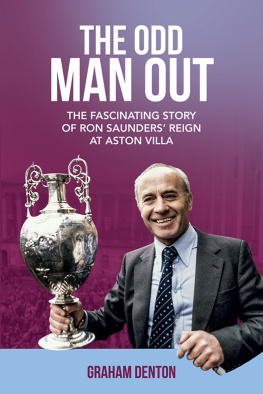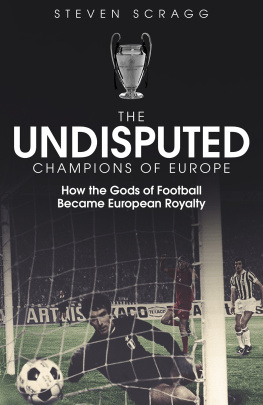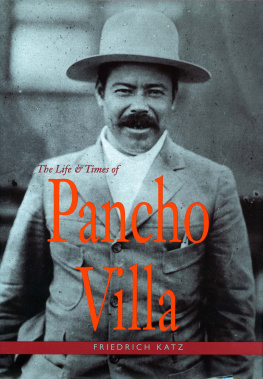Ticket
To The
Moon
ASTON VILLA: THE RISE AND FALL
OF A EUROPEAN CHAMPION
Ticket
To The
Moon
ASTON VILLA: THE RISE AND FALL
OF A EUROPEAN CHAMPION
RICHARD SYDENHAM
First published as a hardback by deCoubertin Books Ltd in 2018.
First Edition
deCoubertin Books, Studio I, Baltic Creative Campus, Liverpool, L1 OAH
www.decoubertin.co.uk
eISBN: 978-1-909245-76-1
Copyright Richard Sydenham, 2018.
The right of Richard Sydenham to be identified as the author of this work has been asserted by him in accordance with the Copyright, Designs and Patents Act 1988. All rights reserved. No part of this publication may be reproduced, stored in or introduced into a retrieval system, or transmitted, in any form, or by any means electronic, mechanical, photocopying, recording or otherwise without the prior written permission of the publisher. Any person who does any unauthorized act in relation to this publication may be left liable to criminal prosecution and civil claims for damages .
A CIP catalogue record for this book is available from the British Library.
Cover design by Thomas Regan/Milkyone. Typeset by Leslie Priestley.
This book is sold subject to the condition that it shall not, by the way of trade or otherwise, be lent, resold, hired out, or otherwise circulated without the authors prior consent in any form of binding or cover other than that in which it was published and without a similar condition including this condition being imposed on the subsequent purchaser .
Every effort has been made to contact copyright holders for photographs used in this book. If we have overlooked you in any way, please get in touch so that we can rectify this in future editions .
For my Dad, Derek; my late grandad, Bill; and my little boy, Isaac four generations of Villains .
Contents
THE RISE:
THE GLORY:
THE FALL:
List of Illustrations
Introduction
I ONLY HAVE VAGUE RECOLLECTIONS OF ATTENDING THE FIRST professional football match in my life. It was Aston Villa against Crystal Palace at Villa Park on Saturday, 21 February 1981. Only the help of modern-day technology in the shape of web archives allow me to be so exact. I have better memories of another game in that momentous season when Villa swept aside John Neals Middlesbrough 30. Apart from it being drizzly and Villa dominating, I have a more unusual recollection. I was sat in the front row of the Trinity Road Stand close to the managers dugout and with only the advertising hoardings separating me from the gravel path that joined the muddied playing surface. I felt that close to the pitch I could almost tug on the shirt of Villas flying winger Tony Morley. It was there on that day I shared a most important revelation to my father. Dad, I said, I need a wee-wee. Dad took one look at the congested front row we would have had to negotiate and replied: Do it here, as he stood me up and encouraged me to wee into the short wall housing an advertising hoarding.
Aston Villa played a significant role in my development as a child. But I was not forced into my Villa upbringing; it felt natural and was actually a third generation evolving. My grandfather Bill, an asphalter, was a Villa supporter and his favourite player was the prolific Villa and England striker from the 1920s, Billy Walker. My dad Dereks favourite was rampaging frontman Gerry Hitchens. My older brother Jeff, who played for the county, was likened to Andy Gray because of his blond curly locks and maybe his goalscoring too. So Villa was in the blood. Naturally, my son Isaac is now a fourth-generation Villa fan.
My early exposure to Villa Park gave me a more advanced insight into the workings of Aston Villa and football in general than many of my school-friends, who were likely playing Star Wars in their back gardens instead. Not that I wasnt immune to outside interests, but there was usually a link to Villa somewhere, such as the quest to complete my Panini football sticker album. Aston Villa players were always the most hotly sought after, obviously, with Villas Gordon Cowans proving the most elusive. If I wasnt pestering Mum and Dad for another packet of stickers I would have been listening to a Duran Duran seven-inch vinyl. When I heard Duran Duran were predominantly Villa fans, it only added to the attraction of their catchy tunes.
The basic facts are known of Villas progress during this period, in terms of conquering Europe, and then a decline so swift they were relegated just five years later. When I became a sports journalist in later years, that sudden rise-and-fall journey and the mostly untold events behind the scenes fascinated me. The question of what happened to cause such a fall from grace strengthened in my consciousness when I hosted low-key question and answer evenings with the likes of Gary Shaw, Tony Morley, Ken McNaught, Gordon Cowans and Jimmy Rimmer. The overriding message from those league championship and European Cup-winning players who I grew up idolising was that their teams success would have continued had it not been for the return of Doug Ellis as chairman in November 1982. I was tempted to side with the majority view but felt this was a subject that warranted greater investigation.
I set myself the challenge of writing my latest book on a subject close to my heart. I have not just aimed to glorify my childhood heroes but have attempted to expose a narrative that has never really been studied in the detail required to understand Villas climb from the cusp of bankruptcy in 1968 to glory in the 1970s and early 80s. And then their painful fall thereafter. Despite brief seasonal highs, Aston Villa has never been the same since. I have tried to avoid taking sides and aimed to present the history of events in a transparent way that tells its own tale. Readers no doubt will develop their own opinions from the contents of these pages adding to what some may know already.
My own view is that the controversial departure of manager Ron Saunders in February 1982 had a more damaging impact on Aston Villas prospects of extended glory than Ellis buying back into Villa later that year, which tends to be the common belief. I feel Ellis receives much unwarranted criticism around this transition, as some people not so close to events blame Ellis for Saunders departure, when he was not even part of Villa then. The exodus of players from that team had begun prior to Elliss return when Kenny Swain moved to Nottingham Forest in September 1982. Allan Evans submitted a written transfer request before Ellis returned, so things were not all rosy at Villa prior to his reclaiming of power.
Ellis, however, is far from blameless in Villas subsequent decline. While his diligence at ensuring the club avoided financial problems before and after the Millennium, he was often overcautious and wrongfully placed more emphasis on cost-cutting and banking half-decent transfer fees than investing in the team. The Graham Turner years crystallised this failure. He allowed quality players like Gordon Cowans, Steve McMahon and Dennis Mortimer to leave, often without replenishing the stocks with similar quality. Too often, Ellis was happy for rookies, either from the reserves or another club, to step into the breach. There will always be players who demand that opportunity through their own ability such as Mark Walters, Tony Daley and Tony Dorigo, or Martin Keown from outside, but too many inadequate players were entrusted for too long in the first team. That policy cost the club eventually and led to what became an inevitable relegation in 1987. In fairness to Turner, this book will detail how he identified several quality players who were gettable, but Ellis traditionally refused to pay the market rate to buy in these higher-profile players and he and the club paid the price. Fast forward to recent times, it was during moments of reflection on a bizarre period in the clubs history, when a golden era quickly descended into chaos, anarchy and failure, that I knew I had to write this book to discover what the hell happened: why was a gradual and then sharp rise followed by such a sudden, humbling fall?












